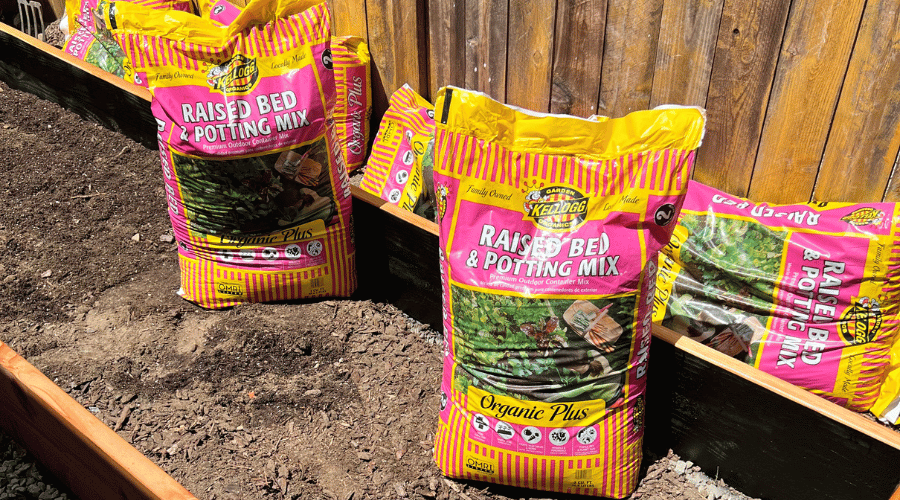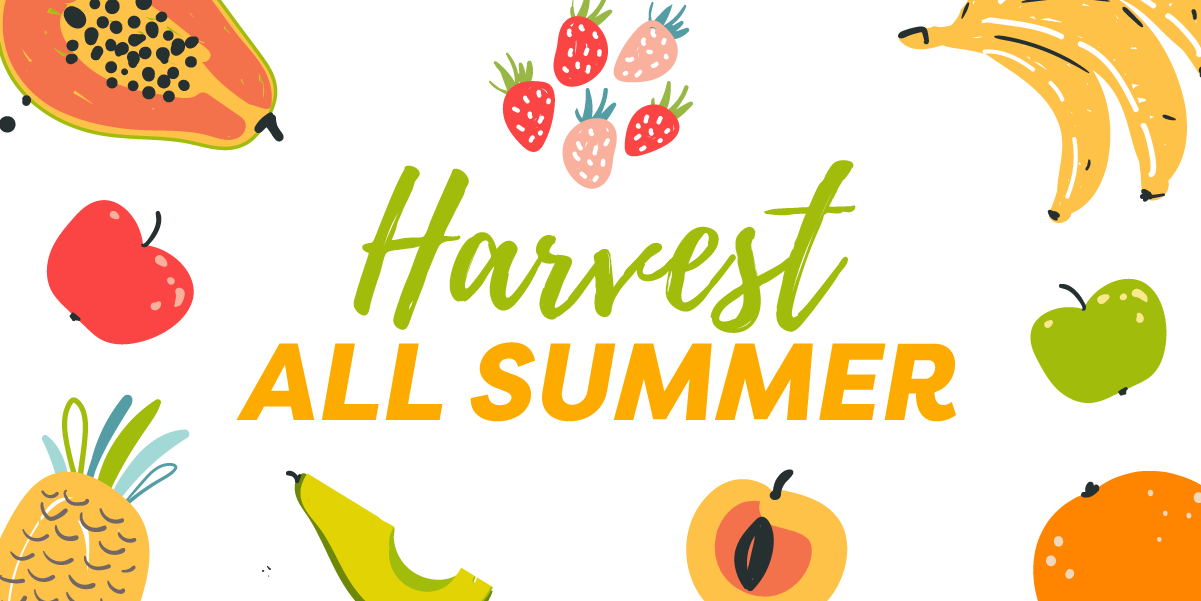The average American eats about four salads weekly. 62% of Americans claim that salad is part of their regular diet. Lettuce may be one of the cheaper items in the produce section, but at $3 a head (and prices keep rising), lettuce alone for that salad could cost a family of four $12 to $15 per week. It adds up fast.
But you can grow your lettuce from seed for about 10 cents a head and harvest it from late spring all through the summer. Plus, your home-grown lettuce will be fresher, contain more nutrients, and taste better than commercial lettuce. And if you grow it organically, you’ll also have a healthier product.
Lettuce is one of the easiest cultivated crops if you space your plants correctly. It’s best to start with seeds indoors or in cold frames about ten weeks before the last frost date for your area. Or, if you want to reap an earlier harvest, try sowing directly into the ground during cool weather. Here’s how to do it, step-by-step.
1. Pick a good location in your yard

Raised garden bed location with plenty of sun.
Space
You’ll need enough space to plant multiple rows of lettuce at different times during the summer so that each row is ready for harvest from one week to the next.
Sunlight
Lettuce needs at least 6 hours of direct sunlight. It also requires regular watering. Southern California’s hot summers make it a good idea to plant lettuce where it gets some shade during the day. Last year we built a raised bed beside the house where it gets 6 hours of direct sun and morning and late afternoon shade.
2. Amend the soil before planting

Potting mix to amend the soil.
- We recommend an excellent compost like Malibu Compost.
- Spread the compost in the bed with a shovel and work it into the existing soil (see picture).
- Rake the soil level.
3. Choose the lettuce varieties you want to grow

Young red leaf and Romaine lettuce.
We have four varieties in our lettuce garden: Romaine, red leaf lettuce, Little Gems (faster growing type of Romaine that is more tender, and kale. (see picture)
Romaine Lettuce
Romaine lettuce, also known as Cos lettuce, has a distinctive elongated, oval shape with strong, upright leaves. This creates a crisp texture that adds an appealing crunch to any salad. Romaine lettuce stands out as a particularly healthy nutritional choice. It’s rich in vitamins A, C, and K, folate, and minerals like calcium and potassium. Moreover, Romaine boasts a higher fiber content than most other lettuce varieties. While Romaine is a popular choice for salads, especially Caesar salads, its sturdy leaves can also be used as a low-carb alternative to bread or wrap in sandwiches. Romaine’s unique texture and flavor make it an excellent candidate for grilling or sautéing, adding a new dimension to your culinary creations.
Red Leaf Lettuce
Red leaf lettuce is known for its vibrant, reddish-purple leaves and mild, sweet flavor. Its tender, delicate texture contrasts nicely with crispier lettuce types like Romaine. Red leaf lettuce is a great source of vitamins A, C, and K and minerals like iron and potassium. The red pigmentation in its leaves is due to anthocyanins, potent antioxidants. Its deep shades of reddish purple and green add a striking note of color to salads.
Little Gems Lettuce
Sometimes called mini Romaine, Little Gems lettuce is a prized variety due to its small size, tender texture, and sweet flavor. These petite lettuce heads are a happy medium between Romaine and butterhead lettuces, combining the best attributes of both varieties. One of the most distinctive features of Little Gems lettuce is its compact size, with each head growing to only about 4 to 6 inches tall. This makes it ideal for small gardens, pots, or window boxes. It’s ready for harvest in as little as 4 to 6 weeks from planting. Little Gems lettuce is a source of vitamins A, C, and K and minerals like calcium and potassium. It also offers a substantial amount of fiber.
Kale
Kale is a nutrient-dense member of the cabbage family. Its hearty dark green, curly leaves are packed with vitamins A, C, and K and minerals like calcium, iron, and potassium. Kale is an excellent source of antioxidants and fiber, making it a powerful addition to a healthy diet. One factor that sets kale apart is its resilience to colder temperatures. As a cold-tolerant crop, kale can continue to thrive and produce leaves even in the face of frost. This hardiness also translates to a robust texture and slightly bitter taste, which can stand up to various cooking methods, such as sautéing, roasting, and even baking into crispy kale chips. Adding a bit of kale to a salad is an easy way to spice up a mix of lettuce greens, but kale can also serve as a salad base, despite its stronger flavor and tougher texture. Kale reseeds itself, and kale leaves are picked individually. The plant will grow new leaves, so unlike lettuce, a single kale plant produces continually.
Should you start with seeds or young plants?
The case for seeds
Lettuce seeds are cheaper than young plants and can be stored for future use. Plus, a single packet of seeds can yield several dozen heads of lettuce over the season. Lettuce is surprisingly easy to grow from seeds. Anawalt stocks seeds from Botanical Interest, which are fast germinating and have a higher success rate than most other brands.
The case for young plants
Anawalt sells lettuce plants from spring through much of the summer. They come in six packs and have grown for about four weeks. This gives you a four-week head start on your harvest versus planting seeds in the ground. Plants cost more than seeds, and their variety is comparatively limited. You might consider using both seeds and plants. For a staggered harvest, start with plants in your first row and sow a second row of seeds. It’s okay to swap out lettuce varieties as you replant. Ideal growing conditions are similar for all types.
Time to maturity

Planting lettuce in the garden.
Most lettuce varieties mature within a range of 60 to 90 days. Stagger the planting in rows between 14 and 20 days to harvest fresh lettuce all summer. If your plants mature in 60 days, you’ll need 3 to 4 rows of space for each variety. If they develop in 90 days, you’ll need 5 to 6 rows. Once you harvest a row of lettuce, you’ll replant it to keep it in the rotation. Spacing for lettuce rows is typically 8″ to 10″. However, I’ve found that 6″ spacing also can work, especially if you pick the lettuce before it reaches full maturity. Younger lettuce is more tender.
4. Mark the garden plot

Keep your plant tags to help you identify lettuce varieties.
Use a tape measure to determine your needed space (number of rows and spacing). Mark where each row will be. Note: You’re only planting the initial row(s). You’ll plant additional rows in the weeks ahead to space out your harvests. I like to plan out my garden by lettuce variety because different varieties mature at different times. But you can save space by planting different varieties together and in rotation.
5. Plant the seeds
Create a furrow

Measuring for the correct distance between plants.
Use your hand, a stick, or a garden tool to make a row about 1/4″ deep in the dirt. If you plant too deep, the seedling may not reach the surface; if too shallow, the seed might wash away. Lettuce is a forgiving plant that still thrives if the seed depth is slightly off.
Sow the seeds

Handheld seeder for planting lettuce seeds.
Using a hand-held seeder Lettuce seeds are tiny. It’s not easy to plant them with your fingers. A two-piece seed planter has a dial controlling seed size and planting seeds at a desired rate. This gadget makes placing the seeds where you want them much more manageable. Cover the seeds with soil and gently water them. Planting plants (see pictures)
- Read the information about each lettuce variety to determine spacing.
- Use a tape measure to determine where plants should go in the row.
- Dig a hole for each plant using your fingers or a trowel.
- Gently unwind the roots from the pot and carefully place the plant in the hole.
- Fill around the plant with soil and gently press down to secure it.
- Water thoroughly.
6. Water the plants
Hand watering
If your garden is close to the hose, it’s easy enough to water by hand. But hand watering can become an inconvenience if you maintain a busy schedule.
Irrigation

Drip irrigation system in a lettuce garden bed.
Adding drip irrigation to your garden makes watering convenient and more precise. I prefer a combination of streamers/bubblers and mist/sprayers. Anawalt carries various drip irrigation supplies to help you set up your own irrigation system.
Addendum
The economic case for growing your own lettuce and salad plants
- The average American eats four salads a week. That’s a lot of salad.
- An organic head of Romaine lettuce costs $2.50 to $3.
- If one head can make two individually-sized salads, two heads of lettuce per week add up to $5 to $7.50.
- Over the 12 weeks of summer, that’s $60 to $90 per person.
Cost to grow your salad plants from seed
- Seed costs 10 cents per head.
- Four weekly salads cost 20 cents (one head makes two salads).
- Over the 12 weeks of summer, that’s $2.40.
- Mulch and water for the summer cost about $1.20.
- Savings vs. the store: $56.40 to $86.40 per person.
Cost to grow your greens from plants
- 70 cents per head (cost includes the plants, mulch, and water).
- Two salads per week are $1.40.
- Over 12 weeks, that’s $16.80.
- Savings vs. the store: $43.20 to $73.20 per person.
When you factor in other salad ingredients purchased from the store for a basic salad (tomatoes, bell peppers, cucumbers, scallions), a small salad may cost upwards of $6. A salad with the same ingredients grown in your garden may cost about $1.50 (including seeds or plants, soil amendment, fertilizer, care, and water).

